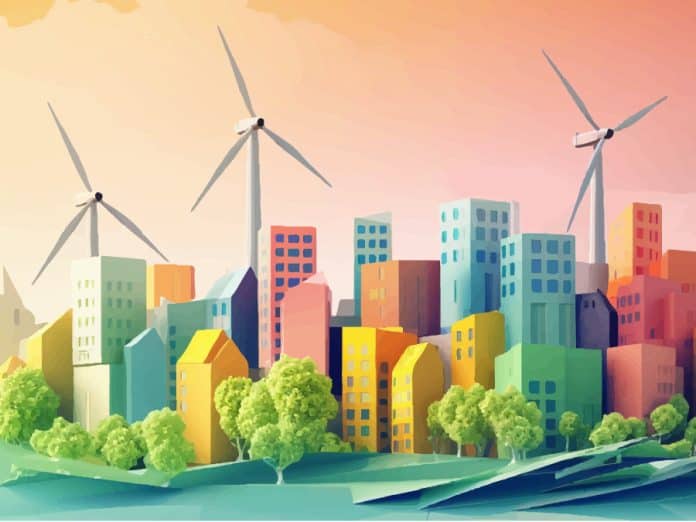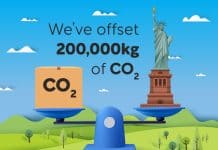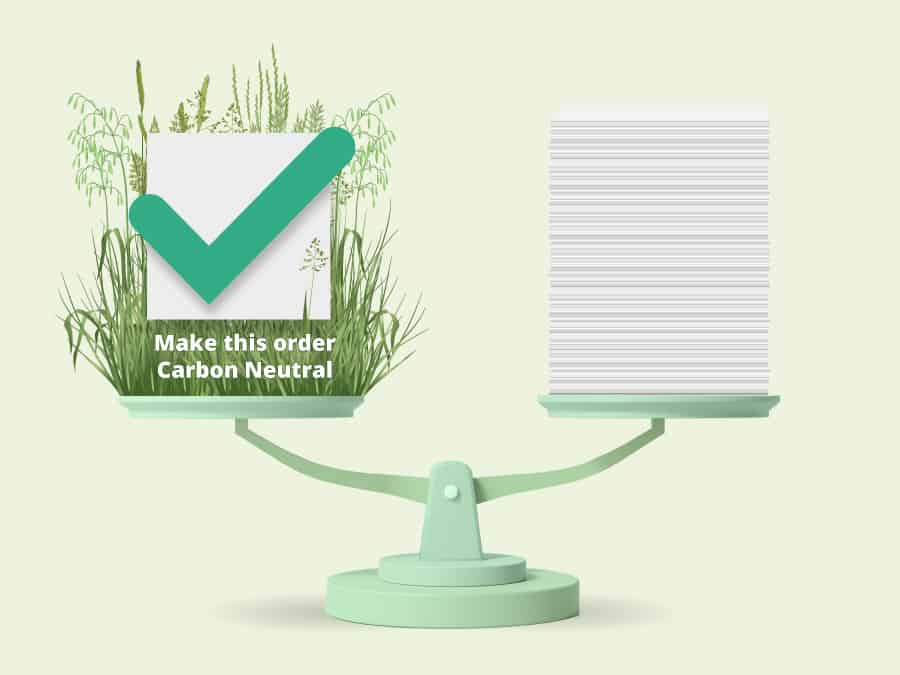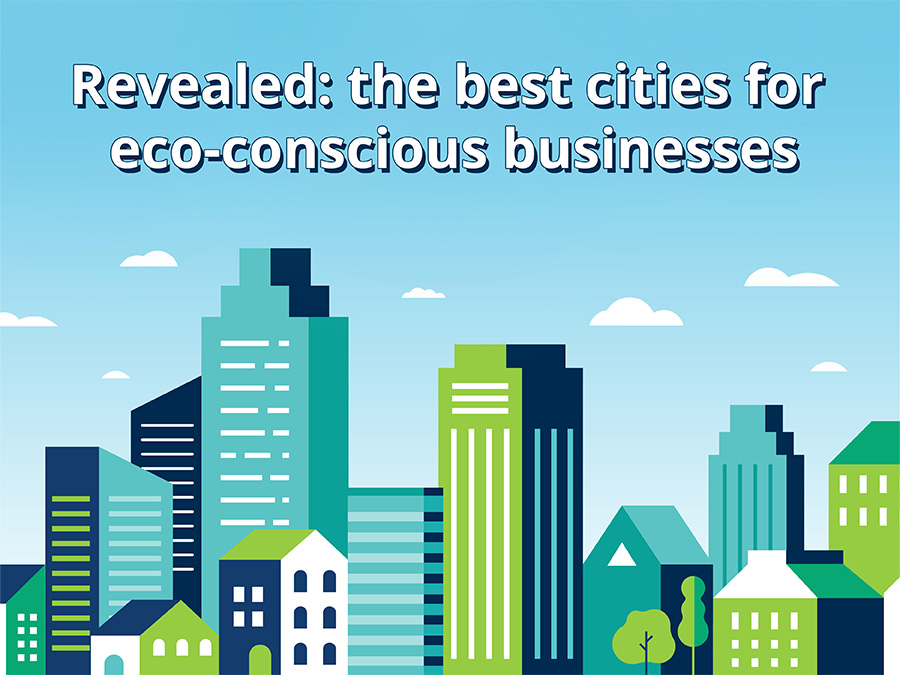As the internet expands and continents connect, the global population is becoming increasingly aware of the potential dangers that a changing climate poses. With many countries, governments and businesses being handed a 2050 deadline to reach net zero, we delve into which UK cities have the least work to do to hit their target.
We have revealed the greenest cities in the UK, looking at each city’s quality of green space, air pollution and percentage of waste sent to be reused. We have also shared the most and least wasteful cities throughout the country.
The top ten greenest cities in the UK
| Rank | Town/City | Quality of green space & parks | Air pollution | Traffic index | Number of walking trails | Number of walking trails (per 10.000 people) | % of waste sent for reuse | Total Number of parks |
| 1 | Milton Keynes | 88.64 | 17.05 | 88.42 | 52 | 1.78 | 51.90% | 44 |
| 2 | Swansea | 82.14 | 20.45 | 93.57 | 78 | 3.23 | 56.70% | 21 |
| 3 | Cambridge | 90.83 | 29.17 | 135.71 | 83 | 5.65 | 48.90% | 23 |
| 4 | Oxford | 88.24 | 20.45 | 134.19 | 60 | 3.68 | 51.20% | 21 |
| 5 | Edinburgh | 81.54 | 25.36 | 114.59 | 138 | 2.68 | 41.70% | 77 |
| 6 | Reading | 78.26 | 27.78 | 132.66 | 103 | 5.89 | 51.50% | 24 |
| 7 | Sheffield | 88.10 | 30.21 | 92.70 | 193 | 3.41 | 32.10% | 80 |
| 8 | Huddersfield | 58.33 | 31.25 | 178.19 | n/a | n/a | n/a | 29 |
| 9 | Cardiff | 78.00 | 35.34 | 98.40 | 45 | 1.21 | 56.70% | 36 |
| 10 | Norwich | 72.50 | 27.50 | 103.36 | 95 | 6.57 | 39.60% | 24 |
Milton Keynes ranks as the greenest city in the UK. Scoring highly in all categories, the city particularly shines by having the lowest air pollution out of the cities analysed, scoring 17.05 out of a possible 100. This could be down to having the lowest traffic index of 88.42 meaning fewer emissions are released into the city. Combined with having the third-highest total number of parks (44), the green space afforded to its population makes Milton Keynes a desirable city for green-minded people.
Swansea stands as the second greenest city in the UK. One of the key reasons for this is having the second lowest air pollution (20.45), behind Milton Keynes. The Welsh city also has the third lowest traffic index which could help explain why their air pollution is so low. Alongside the Welsh capital Cardiff, Swansea has the joint highest percentage of waste sent for reuse with 56.7%, which suggests Wales is leading the way with recycling in the UK.
Cambridge ranks as the third greenest city in the UK. One key factor is the city has the highest quality of green space and parks, with a huge score of 90.83. Cambridge is home to a strong selection of 83 walking trails, offering the third-highest number of trails per 10,000 people (5.65). Interestingly, although being one of the UK’s greenest cities, Cambridge has the second worst score for traffic at 135.71, only behind Huddersfield.
Notable mentions include Edinburgh, the only Scottish city in the top ten, which boasts the second-highest number of walking trails in the list and the second-highest number of parks too. Although Norwich has the second lowest score for the quality of its green space and parks (72.50), it has the highest number of walking trails per 10,000 people available (6.57). Sheffield owns the most walking trails in the top ten and similarly, the highest number of parks. Huddersfield has the lowest quality of green space and parks (58.33).
The top ten least green cities in the UK
| Rank | Town/City | Quality of green space & parks | Air pollution | Traffic index | Number of walking trails | Number of walking trails (per 10.000 people) | % of waste sent for reuse | Total number of parks |
| 1 | Wolverhampton | 50.00 | 68.75 | n/a | 26 | 0.97 | 37.30% | 18 |
| 2 | Doncaster | 60.71 | 87.50 | n/a | 16 | 0.51 | 44.80% | 18 |
| 3 | Bradford | 55.00 | 54.17 | 216.98 | 14 | 0.25 | 36.10% | 49 |
| 4 | Birmingham | 56.41 | 46.02 | 132.71 | 93 | 0.80 | 22.80% | 81 |
| 5 | Swindon | 75.00 | 60.71 | 173.57 | 49 | 2.08 | 36.50% | 10 |
| 6 | Peterborough | 58.33 | 29.17 | 210.35 | 52 | 2.39 | 38.90% | 15 |
| 7 | Southend-on-Sea | 31.25 | 41.67 | 120.19 | 6 | 0.33 | 43.00% | 15 |
| 8 | Southampton | 66.67 | 41.07 | n/a | 90 | 3.56 | 27.70% | 24 |
| 9 | Crawley | n/a | n/a | 150 | 19 | 1.59 | 31.40% | 20 |
| 10 | Coventry | 50.00 | 42.19 | 99.66 | 60 | 1.69 | 28.60% | 34 |
Wolverhampton is the least green city in the UK. This is because the Black Country city has the joint lowest score for the quality of its green space and parks (50.00), the second highest rating for air pollution (68.75) alongside the limited number of walking trails (26) and the total number of parks (18) for its population. These factors could explain why Wolverhampton ranks so low.
Doncaster is the UK’s second least green city. This can be explained by the city having the highest air pollution (87.50) of all the cities analysed. Doncaster also has the third-lowest number of walking trails (16) and the joint third-lowest number of parks (18) available to its population. However, although this city is the second least green in the UK, surprisingly it has the highest percentage of waste sent for reuse (44.80%) from this list.
Bradford is the third least green city in the UK. One reason for this is that it has the highest traffic index (216.98), along with the second-fewest walking trails (14) and the fewest trails per 10,000 (0.25). On a positive note, Bradford has the second-highest total of parks available (49).
Noteworthy mentions are Birmingham, which has the highest total number of walking trails (93) and parks (81), although it reuses the lowest percentage of its waste (22.80%). Swindon provides the least parks to its population, however, interestingly it does have the highest quality of green space and parks (75.00). Conversely, Southend-On-Sea has the lowest quality of green space and parks (31.25) and the fewest walking trails (6) available to its population.
The top ten UK cities that produce the least waste
| Rank | Town/City | % of waste sent for reuse |
| 1 | Swansea | 56.70% |
| 2 | Cardiff | 56.70% |
| 3 | Newport | 56.70% |
| 4 | Wigan | 53.0% |
| 5 | Milton Keynes | 51.9% |
| 6 | Reading | 51.5% |
| 7 | Oxford | 51.2% |
| 8 | Cambridge | 48.9% |
| 9 | Belfast | 48.40% |
| 10 | Kingston upon Hull | 48.0% |
Swansea, Cardiff and Newport are the UK cities that produce the least waste, all tied with 56.70% of their waste sent for reuse. This clearly shows that Wales has the best recycling scheme out of the UK nations. Looking closer at English cities, Wigan ranks fourth with 53.00% of its waste sent for reuse. Belfast is ninth and is the best city in Northern Ireland with 48.40% of its waste being reused. Milton Keynes (51.90), Reading (51.50%), Oxford (51.20%), Cambridge (48.90%) and Kingston upon Hull (48.00%) complete the list.
The top ten UK cities that produce the most waste
| Rank | Town/City | % of waste sent for reuse |
| 1 | Birmingham | 22.8% |
| 2 | Liverpool | 22.9% |
| 3 | Nottingham | 25.3% |
| 4 | Portsmouth | 27.1% |
| 5 | Southampton | 27.7% |
| 6 | Luton | 28.6% |
| 7 | Coventry | 28.6% |
| 8 | Sunderland | 29.8% |
| 9 | Crawley | 31.4% |
| 10 | Sheffield | 32.1% |
Birmingham is the city that produces the most waste, with 77.20% of the city’s waste not being reused. This is closely followed by Liverpool, where 77.10% of the total waste is not reused. Nottingham is the third most wasteful UK city as 74.70% of the East Midlander’s waste is not reused. Portsmouth send 27.10% of their waste for reuse, with Southampton (27.70%), Luton (28.60%), Coventry (28.60%), Sunderland (29.80%), Crawley (31.40%) and Sheffield (32.10%) completing the list. This means that no city from either Scotland, Wales or Northern Ireland is among the most wasteful cities in the UK.
Mike’s top five tips on how to make your business sustainable
Mike Hales, Purchasing & Compliance Manager at Solopress comments: “It’s surprising how making several small steps can improve your business’ sustainability and increase profitability. Consider the choices you have and make a plan of action. Here are my top five tips to make your business more sustainable:
- Look at industry-specific certifications
- Talk to competitors or trade bodies
- Calculate your carbon footprint
- Create green solutions for your customers, staff and suppliers
- Make your offices and factories more energy-efficient”
Look at industry-specific certifications
Each industry will have specific requirements. A good place to start is finding what your industry demands. For example, one popular certification in the print industry is the Forest Stewardship Council. Being FSC certified shows that brands meet the required standard for businesses associated with productive forest or forest products. In return, they provide businesses with greater efficiency, market access, meet the UN Sustainable Development Goals and offer tailored solutions for different sectors. Find what industry-specific certifications are available to you to bolster your sustainability.
Talk to competitors or trade bodies
Talk to trade bodies, they’re there to support you. They could help you find suitable grants and competitive financing for new energy-efficient investments. Speak to competitors to see what has worked and given them the best ROI. Most importantly, learn from their experience!
Calculate your carbon footprint
2050 is the target that UK businesses have been given to reach net zero. Calculating your business’ carbon footprint can provide greater clarity to your sustainability targets. There’s a host of free calculators online that can find your carbon footprint quickly. Once this is done, you can know with greater confidence how much work needs to be done or even specific things that you can fix to improve your footprint.
Create green solutions for your customers, staff and suppliers
Give your customers a sustainable choice, are there greener alternatives to your products you can offer? Educate your workforce on green solutions. When travelling to work, can your staff use public transport, cycle, walk or car share? If your business is shift-based, by changing those shift times you can reduce time spent in traffic jams without affecting your productivity. Work with your suppliers to reduce unnecessary packaging waste without increased risk of transit damage. Are there similar recycled product options you can use? Source alternative manufacturers closer to your site to reduce your carbon footprint.
Make your offices and factories more energy-efficient
There are so many methods to make your offices or factories more energy efficient. Some of these include:
- Changing from green to grey electricity
- Updating old gas or oil heaters to more efficient versions
- Replacing inefficient equipment with high energy consumption
- Turning off equipment when it’s not used
- Fitting sensors and timers to areas not needed all the time
- Improving insulation and double-glazing
- Changing to LED lighting, adding solar panels or voltage optimisation
- Making air conditioning and heating in large areas more efficient




